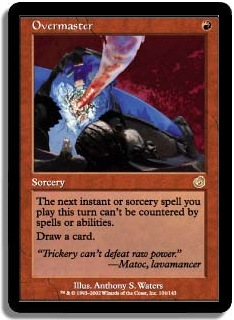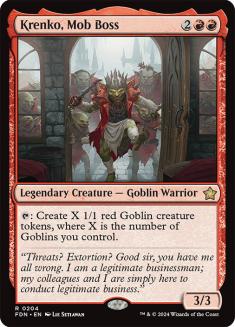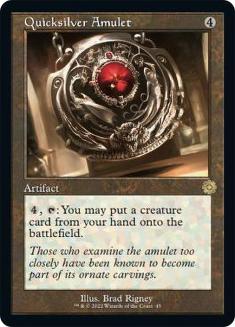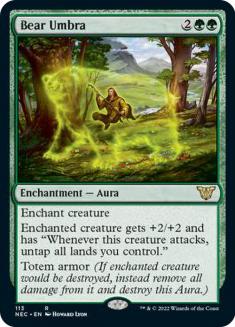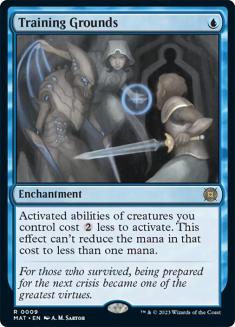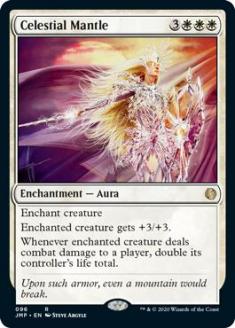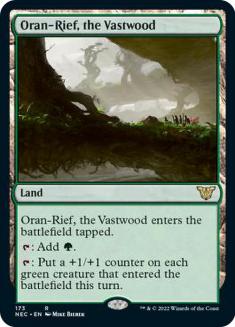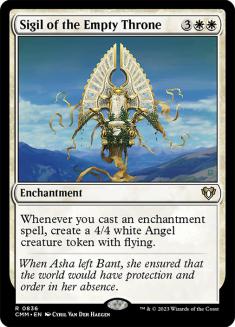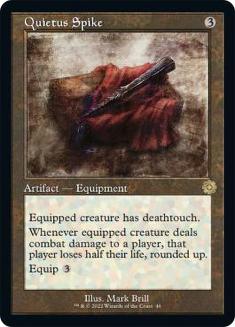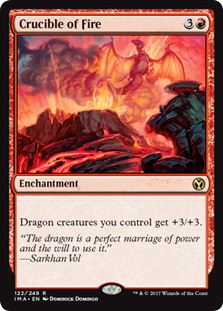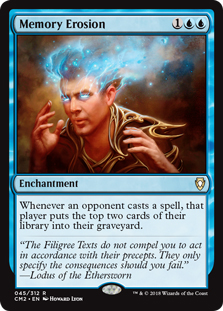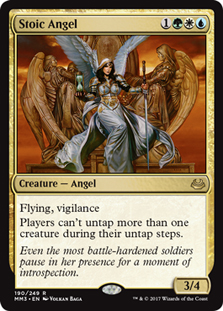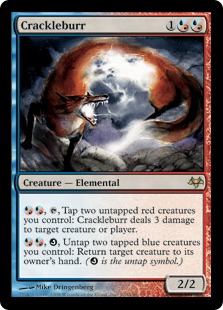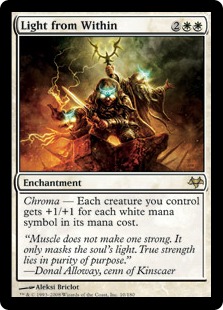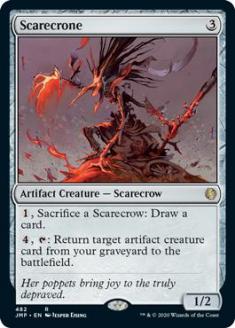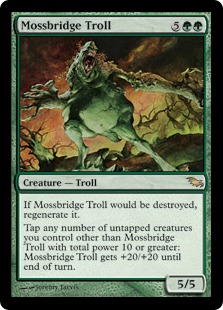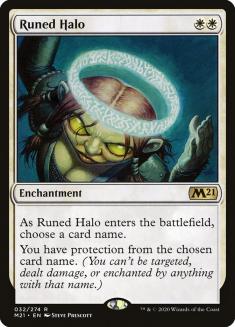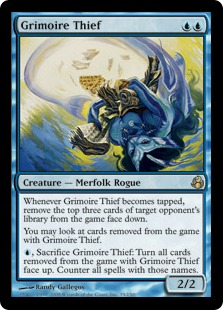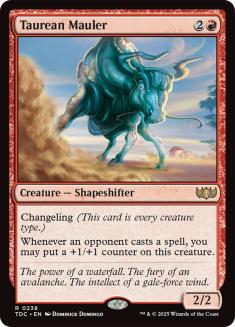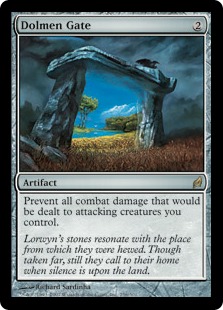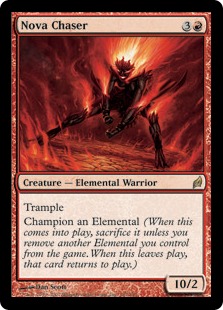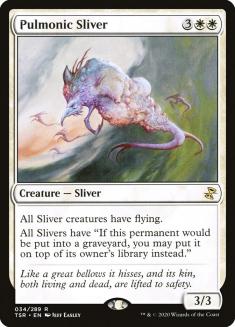First, let me get something out of the way: there was a Pro Tour over the weekend. The event likely had a large and far-reaching impact on card prices and the future of Standard. Unfortunately, back when I wrote this, the Pro Tour was still several days away. By the time I will have sent this article in to my editor, all we’ll have seen will be the first Draft portion and a round or two of Standard. Thanks to the nature of these things, I will not be discussing the fallout from this event until next week. If you can’t wait, I suggest you follow me @ChasAndres on Twitter to get the latest finance news as it unfolds in real time. I am also happy to answer PT-related finance questions in the comments.
For now, I’d like to discuss a more timeless topic: bulk rares. In many ways, these are the unsung heroes of the Magic finance world, and I’ve neglected to discuss them in depth for far too long.
Low Margins, High Profits
The best thing about bulk rares is that they are about as risk free as Magic finance gets. Ten cents each is the absolute bottom of the market—that’s StarCityGames.com buy price, and I don’t see it dropping any time soon. Worst case, it is totally reasonable to ship all of your bulk rares to SCG and move on with your life. This is always going to be a much safer play than a $20 card which has the chance to lose most of its value overnight if it is banned or outmoded by another card or a metagame shift.
At the top of the market, you can buy bulk rares in lots of 1,000 from SCG for seventeen and a half cents each. I have never seen anyone buy bulk cards for more than this—otherwise, there would be a great arbitrage opportunity in buying out SCG and selling to the other outlet. Thus, most vendors and private buyers value bulk rares somewhere in between ten and eighteen cents.
When acquiring bulk rares, I generally assign them a blanket value of fifteen cents each. So far, I’ve always been able to find a buyer at this price, so my worst-case scenario is breaking even on every card I buy. Whenever any non-dealer offers me a large lot of sight unseen bulk rares, I am always happy to offer them the fifteen cents each without hesitation, even if I know that I’ll be selling 90% of them for the same price I paid. This is because there is a very large difference between bulk and "true bulk," and that difference is where the real money lies.
Picking Bulk Rares
Several weeks ago, I paid a visit to the Frank & Sons Collectibles Show—a Los Angeles staple. Every week at least ten or twelve Magic vendors set up and compete for your business. It’s a speculator’s dream, and I highly recommend it to anyone in the area.
A few of the vendors have bulk rare boxes that anyone can pick through. The cost is usually around 50 cents per card, and you can wade through thousands of terrible rares in hopes of finding a diamond in the rough. A half-dozen people were picking through the pile, so I wasn’t paying much attention, but all of a sudden a card caught my eye. Sitting in the middle of the bulk, overlooked by everyone else, was a copy of Overmaster.
After three minutes of digging, I managed to find another six copies of Overmaster, including two that were in Japanese. It wasn’t the find of the century by any stretch, but StarCityGames.com sells Overmaster at $4 and buys it at $1. Even if I couldn’t find a trading partner interested in the cards, I could buylist them and still make a nice profit. Dozens of people looked through these cards, including the dealer, and I was the first one to recognize that there was money left to be made.
Of course, knowing which rares are bulk and which ones aren’t takes a long time to master. Not only are there thousands of rares in the history of Magic, but the prices change almost weekly. Did you know that Overmaster was a $4 card? It was actually worth more than that for a brief amount of time thanks to a fringe amount of Legacy play. Before that, it was a bulk rare. What about Llawan, Cephalid Empress? She went from bulk to a $15 card a few years back. Now she’s just $3.50. Who can keep up with all of that?
The simple truth is that no one can, including me and most dealers. That’s why anyone with a broad enough knowledge can make a profit picking through bulk—even cards that were picked over by people who know what they’re doing. Go to any Grand Prix and you’ll find bulk boxes set up on the side of almost every dealer table. If you hit the box up early enough in the weekend, chances are you’ll be able to find some amazing deals. Not only can you find cards that were missed, but many of these vendors generally have such a high number of sales that it isn’t worth it to them to spend hours sorting $3 cards out of their $0.50 bulk piles—even if those $3 cards buylist at a buck.
Even giant vendors like SCG take advantage of the appeal of bulk to create hype at their dealer tables. When SCG gets too many played mid-level casual bulk foil rares in stock, they’ll sometimes offer up a box where you can snag them for a buck or two each on site. Often, these same foils will be retailing on the website for between $5 and $6. By taking advantage of their sales and overstock, you can fill an empty binder on sweet casual foils, take it home to your local store, and clean up at FNM if your local crowd is in to that sort of thing.
The most fun thing, of course, is buying up a collection of bulk, taking it home, and sorting it yourself. This way, you can go through each card one at a time, look it up, and sort it into a pile based on price. Not only will this guarantee that you won’t miss a card, but it will teach you about each rare as you do it. Many of my evenings are spent with a pile of bulk, the website of a retail store, and a TV show on in the background. I’ll sort the cards into five piles—true bulk, $0.50, $1, $2, and $++—that I can use later on when trading or selling. I’m always shocked when I find value in card that I had previously thought was worth nothing. Did you know that the following rares retail for at least $2 on SCG?
I could keep going and going. None of those cards are going to drive up your overall net worth all that much, but they aren’t true bulk, either. If you can get someone at FNM to give you a hot standard rare for a playset of a card that you acquired at $0.15 each, you’ll find that your collection will balloon in value very quickly.
It is also worth picking out bulk rares that you think have a shot to see play at some point in the future. 75% of the value of my collection came from making certain that I had playsets of every single rare before Commander was invented. Because of that, I was able to acquire playsets of Mana Reflection, Gilded Drake, Woodfall Primus, and more for fifty cents each or less. Who knows what format might be invented next year that will change the value of very old cards?
Selling and Trading Bulk Rares
I love trading with bulk rares. Unfortunately, the practice has gotten a bad rap as of late. There was a trader (who has since been banned from all StarCityGames.com events) that made a splash at tournaments last year due to his desire to trade his expensive staples for your bulk cards. Unfortunately, he went about it the most insidious way possible. Not only was he rude and belligerent, but he valued almost all cards coming his way as bulk and put a price of just eight or nine cents on them while valuing his cards at full retail. Even if the only cards he acquired were true bulk—and they most definitely weren’t—he was still trading his cards at retail for yours at lower than buylist.
If you see people like this in the community, refuse to deal with them and let everyone else know what they are up to. They are chasing players away from the game of Magic and making it harder for everyone else to trade smartly and fairly.
Luckily, there are some reasonable ways to make ethical trades while using bulk rares effectively.
A year and a half ago, Sam Blitch posted his bulk rare strategy, and it’s a great one. He has a bulk box that he runs with the following set of rules:
1) You can put any two rares in and get one rare out.
2) For every ten cards put in, no two cards can be the same.
3) Certain uncommons are accepted and are exempt from Rule #2.
This is an excellent method for making money while doing almost no work. The cost is very clear: putting two rares in for one means that you double your money on "true bulk" while your trading partner gets to swap two useless cards for one that they want. It puts all of the decision-making squarely on them, which makes for a great low-pressure icebreaker trade. The second rule prevents you from having to restart the box too often because someone just decided to dump all their copies of Search the City. The third rule allows you to stock up on uncommons that are soon to become format staples.
It’s a win/win/win—no one is forced to make a trade they’re uncomfortable with, you make a dime every time someone makes a deal at all, and if they give you a card back that’s above true bulk you can profit even further.
This model is less effective if you have a ton of $1-$2 cards that you want to get rid of, though. Putting those in your box is going to lead to a flood of people swapping you two $0.10 cards for your $2 casual gem. In these cases, it might be worth it to carry three boxes: one filled with $0.50 cards, one with $1 cards, and one with $2 cards. Tell anyone with a decent binder that you’re more than happy to find cards at full retail in their collection for whatever they want from your bulk—it’s a guaranteed easy trade where you only have to start looking up prices on half the deal. Most competitive players won’t waste their time pawing through boxes, but casual players eat this stuff up. These trades can take a very long time but do allow you to trade up to some really nice staples without having to give up anything very good in return.
Trying to go the other way—trading staples for bulk—is harder. Most people value their cards higher than $0.15 each, and they generally balk at a purely bulk trade. I generally only bring up the possibility of a bulk trade when someone starts lamenting that they don’t have enough in their book to get some awesome staple that they want from me. When this happens, I let them know that I’m happy to take any rares they want at $0.15 each in trade for any card in my binder.
The last large bulk deal I made involved shipping at Trostani at $15 right after Return to Ravnica was released. In return, I got a bunch of bulk that included several copies of Rest in Peace, Epic Experiment, Nivmagus Elemental, Collective Blessing, and some other casual hits. The best time to hit someone up for a bulk trade like this is right after they’ve vendored away the majority of their binder at a large event. At this point, your trade partner will likely be grateful that he’s getting anything out of the cards that the vendor rejected at all.
There are a number of interesting ways to sell bulk rares. Because the margins on these are generally pretty low, there isn’t really a bad way per se—it just depends on how much time you want to put in to your sale and how many other cards you want to get rid of at the same time.
If you have a couple of thousand true bulk rares that you just want to get rid of, buylisting them is your best option. These cards are hard to trade, even in a Sam Blitch-esque manner, and at some point you just have to bite the bullet and let them go.
If you have better rares you are trying to sell as well, putting together repacks is an intriguing option. With repacks, it is important to try and make sure none of them are outright terrible. That way, you won’t get inundated with lousy feedback from disgruntled buyers. These have gotten less popular as more people figure out that they can be a scam, but if done right it is still a reasonable outlet for selling cards en masse.
If you have a lot of commons and uncommons, you can try to parcel them together with your bulk rares in order to create "instant collections." These will generally sell to newer players looking to increase the size of their collection by a thousand percent for the price of a couple of booster packs. I had a lot more luck selling these before the Deckbuilder’s Toolkit was created, though, and lately I haven’t been able to move them at all. Many times, the issue comes down to the prohibitive shipping cost of so many cheap cards.
In general, establishing a connection with a local store or vendor who is willing to give you a market rate for your bulk is likely to be your best bet for safe profits.
This Week’s (Pre-Pro Tour) Trends
– Our yearly seasonal hype bubble is inflating right on schedule. Modern prices are at the height of nuttiness, and Standard will likely join the party soon enough. Remember, this is the time to sell all the cards you aren’t planning to use for the next few months. You can buy them back again in August for a lot less, I promise.
– Hot tech from the first round of the Pro Tour: Planar Cleansing and Harvest Pyre on Boros Reckoner. Not sure how much higher the Reckoner can go, but foil Harvest Pyres sold out pretty quickly at $0.15 each—they should jump to a buck or two at least. Planar Cleansing was a $0.50 card, and it could climb to $2-$3 if enough people are interested in trying it out.
– Last week, Tomoharu Saito tweeted the picture of the deck he’d play at the Pro Tour if he were attending:
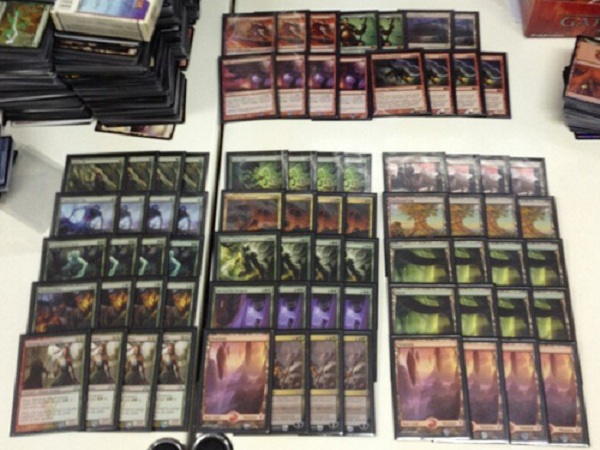
People went nuts over it fairly quickly. Not only did speculators start to salivate, but Standard players began playing it in Daily Events. I don’t know if it was due to win percentage or just sheer numbers, but the deck did put up some good finishes in early testing.
The card on this list that everyone in the finance world decided to move in on was Gyre Sage. Because it was a low-cost rare from a set that most people haven’t opened much of yet, it had the most room to put up juicy margins quickly. When this list was posted, Gyre Sage was just $2 on SCG. As of this writing, it has doubled to $4—and it actually spiked a little higher than that for a few hours when SCG was out of stock. The future price for this card will depend on how Saito-esque decks did at the Pro Tour this weekend. If they performed well, the card should stick in the $5-$6 range for a while. If not, it will slowly begin to drop once more.
If this deck does gain in popularity, there are quite a few other opportunities to make some money as well. Domri Rade has started to show up everywhere, and he’s still retailing for just $25. That will likely change—really good planeswalkers tend to spike hard and quickly. Wolfir Silverheart might make a bit of a comeback, too—that casual hit is down to just $2. Increasing Savagery is a $1.50 card that you can easily trade for as a throw-in. Flinthoof Boar may become a premium uncommon, which until now has been sitting around in bulk bins.
– Boros Reckoner has spiked yet again, this time to a nutty price of $25. In order for the card to sustain this value, it will have to become as ubiquitous as Thragtusk. I’m not saying that can’t happen, but I’ll be shocked if it does. I am a seller at $25.
– SCG has raised its price on Hellrider from $12 to $18. It is still to be determined whether or not this is the card’s new normal value or if this is simply an event-related price spike. Regardless, I am a seller at $18.
– Good luck finding a copy of Spectral Procession for under $5 anywhere on the Internet right now. I had no idea that one had shot up so far.
– Finding Linvala, Keeper of Silence for under $20 has become almost impossible as well.
– Most of the places listing Sanguine Bond for less than $10 are sold out. This card seems to be trading in the $15 range right now.
– Grove of the Burnwillows is sold out on all the sites that list it at $15. Right now, it’s trading and selling in the $20 range.
Until next week–
– Chas Andres

